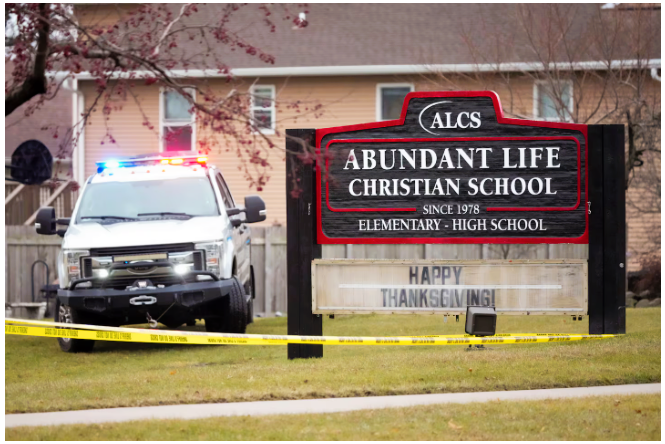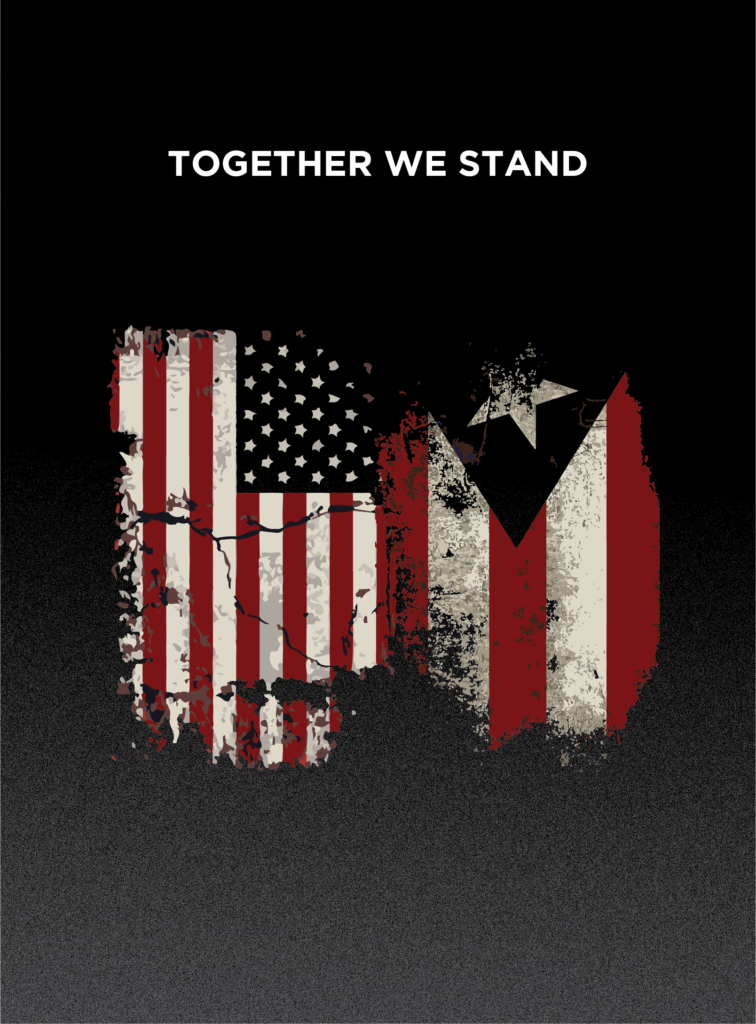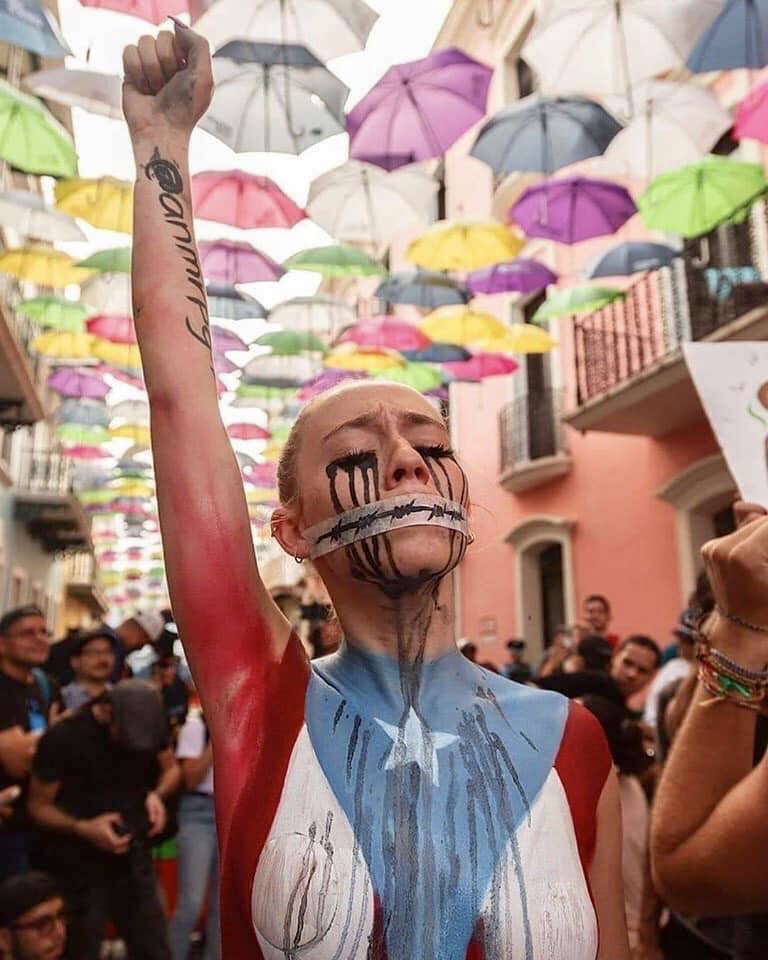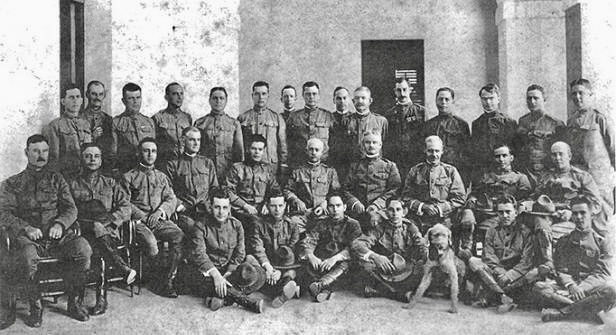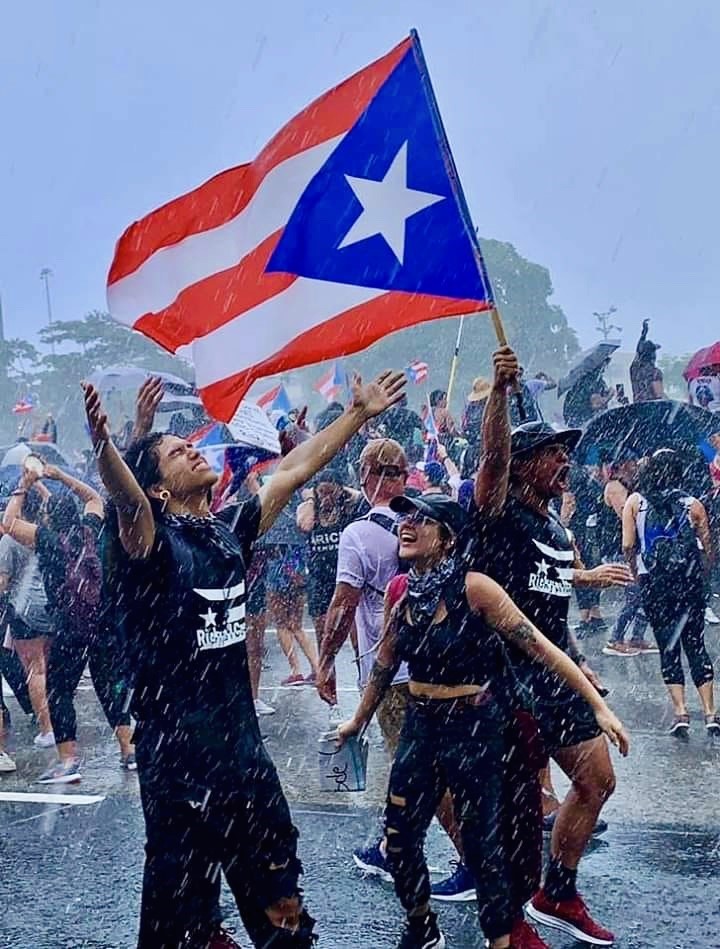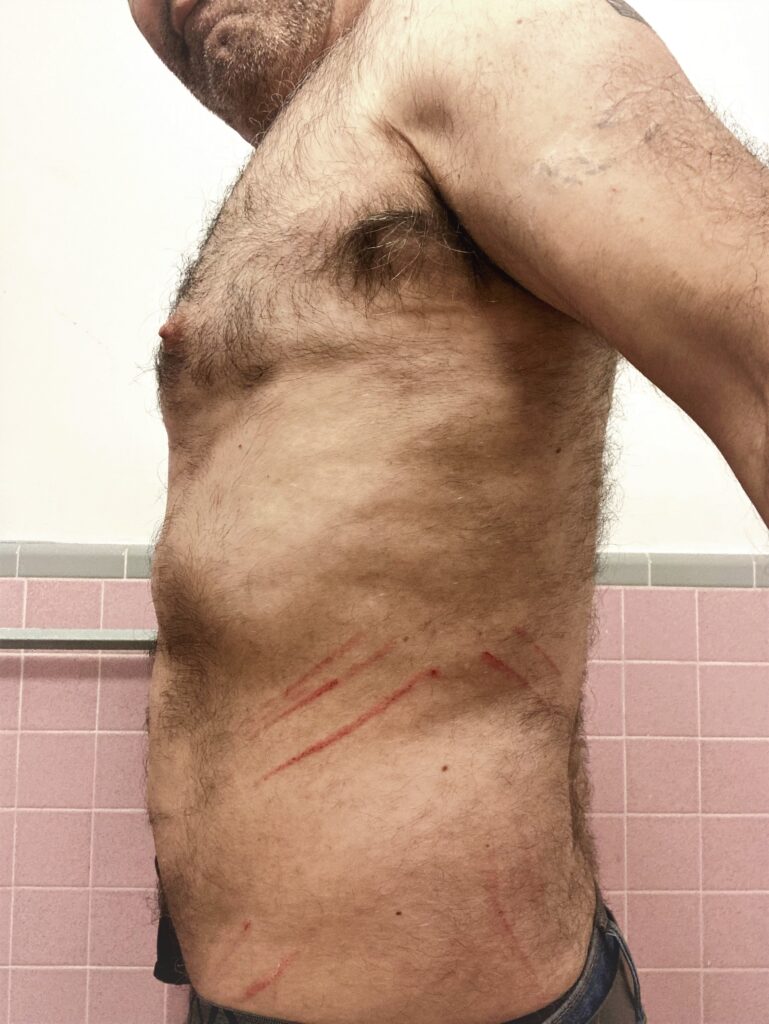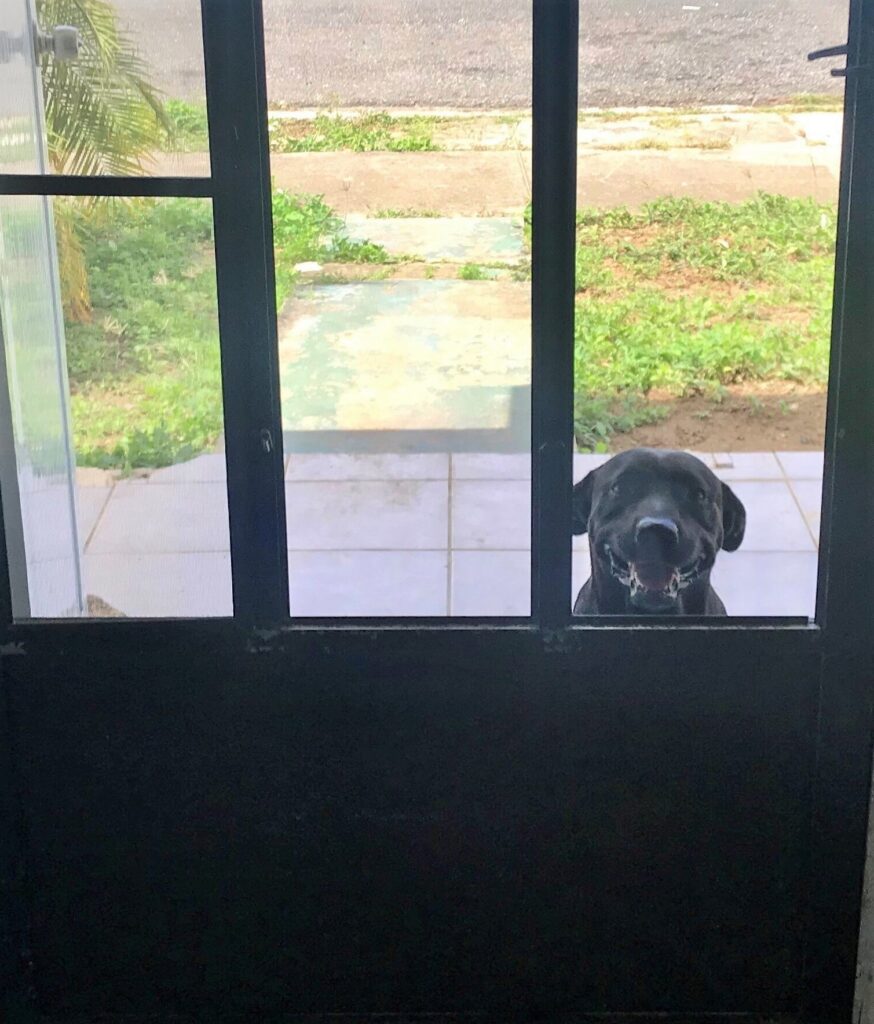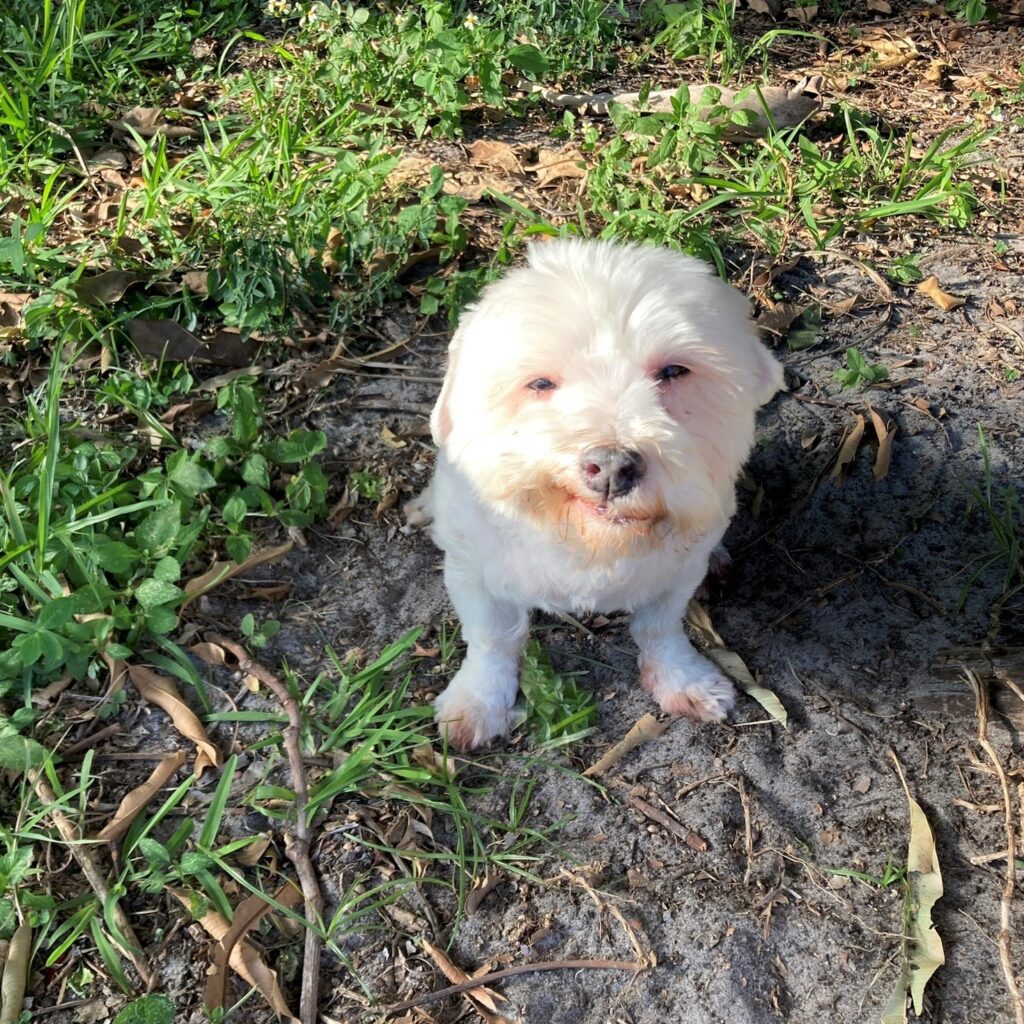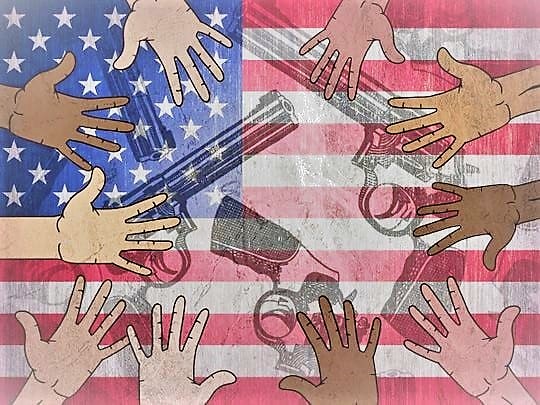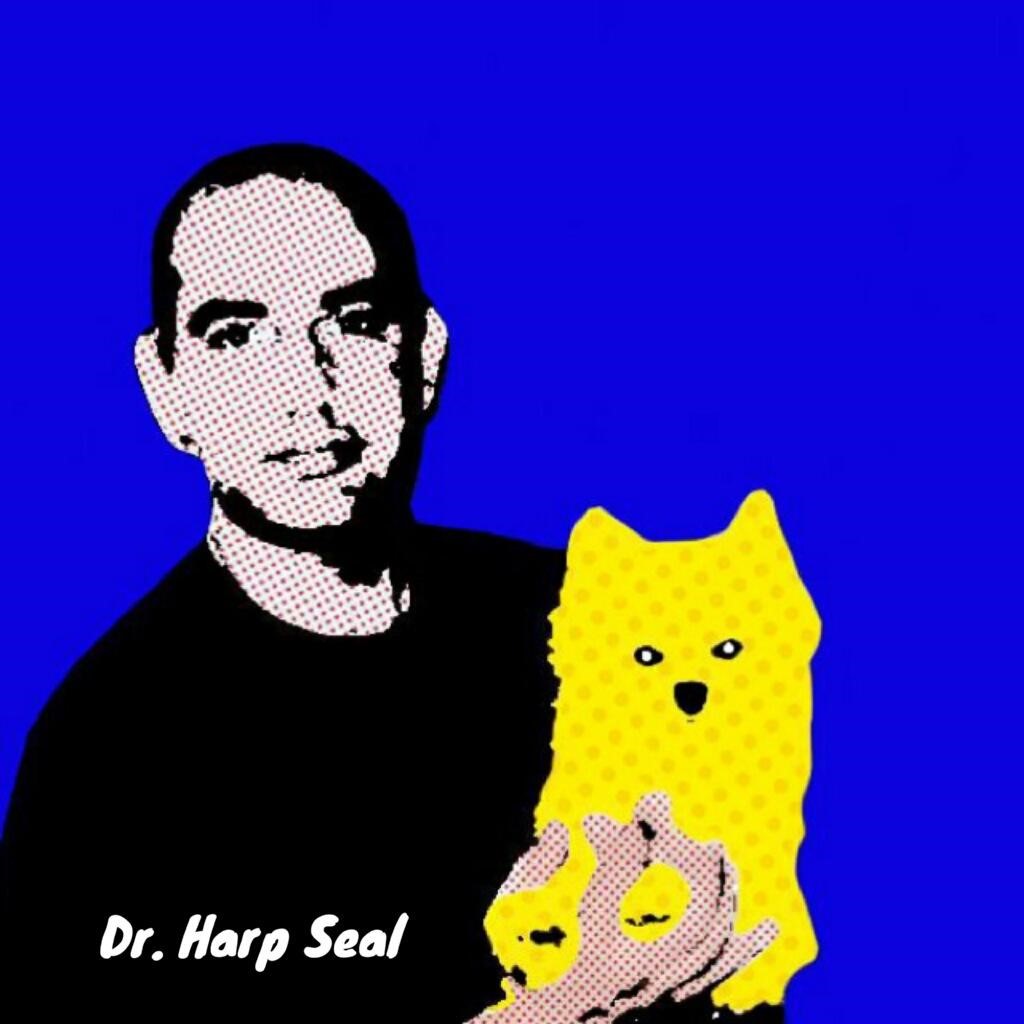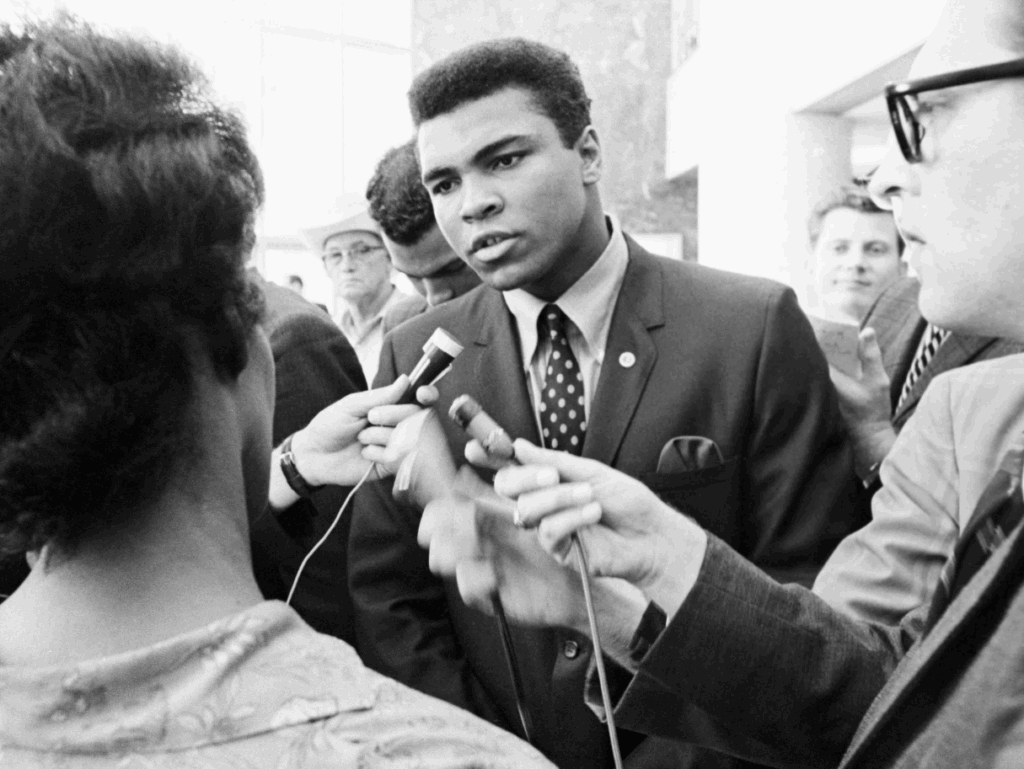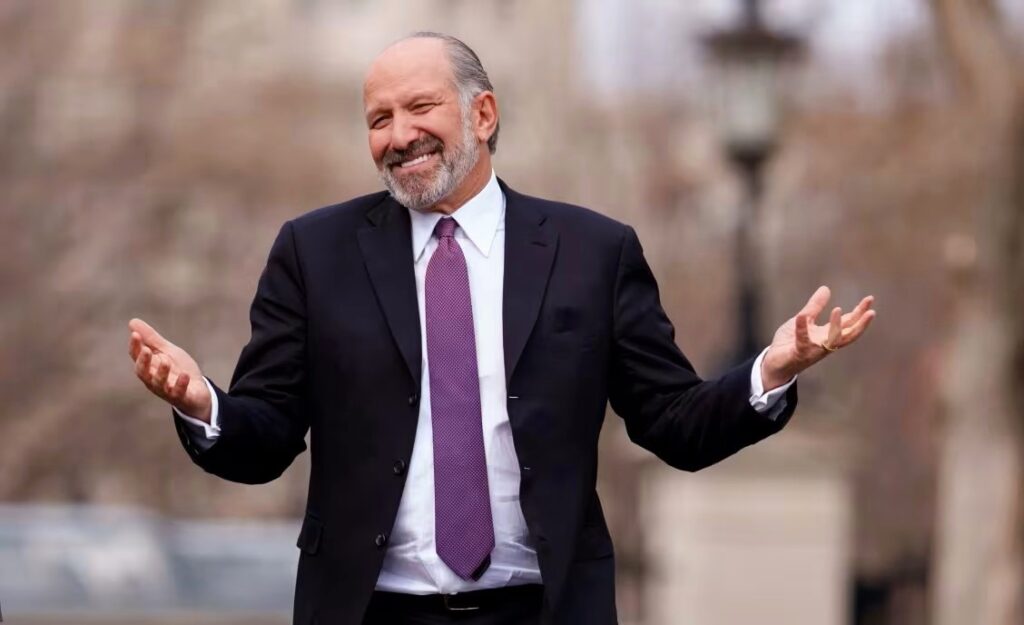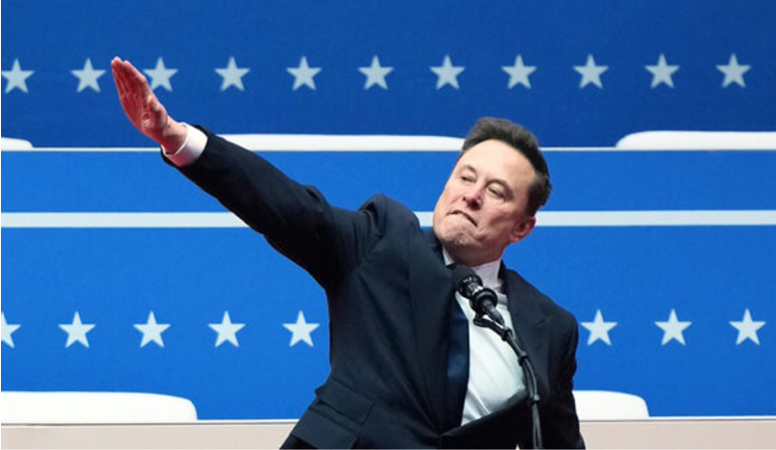
Sometimes you just walk out of the house and your life changes forever. You don’t remember your life before that day. That’s what happened eight years ago, on May 10th, 2017, when I first encountered Lucky on the street in Puerto Rico. This boy took my breath away. I was electrified by him from the onset. Lucky and I share the same heart.
Let me tell you our story:
It was a ordinary Wednesday evening on May 10th, 2017 in Puerto Rico. I was feeling kind of restless and hungry and went to a local eatery for a sandwich. As I was eating, I started gazing out the window very spaced out and preoccupied. I felt agitated and unsettled. Then I noticed this sweet boy in the cover picture with me living alone on the street.
I brought him some food and sat down with him. I was so enamored with him that my head was spinning. Meeting this boy was a life changing experience. I decided to pull him off the street and have him boarded at a very fun place for 5 weeks with a lot of other dogs. Every Saturday and Sunday I would go visit him. I started to realize that he and I were forever. Now, I just had to convince my wife at that time in order to bring him home. But, luckily for Lucky (pun intended), the only answer I was willing to accept from my wife was, “Yes.” Guess what her answer was? You got it. The next day Lucky moved in with my human family and pack.
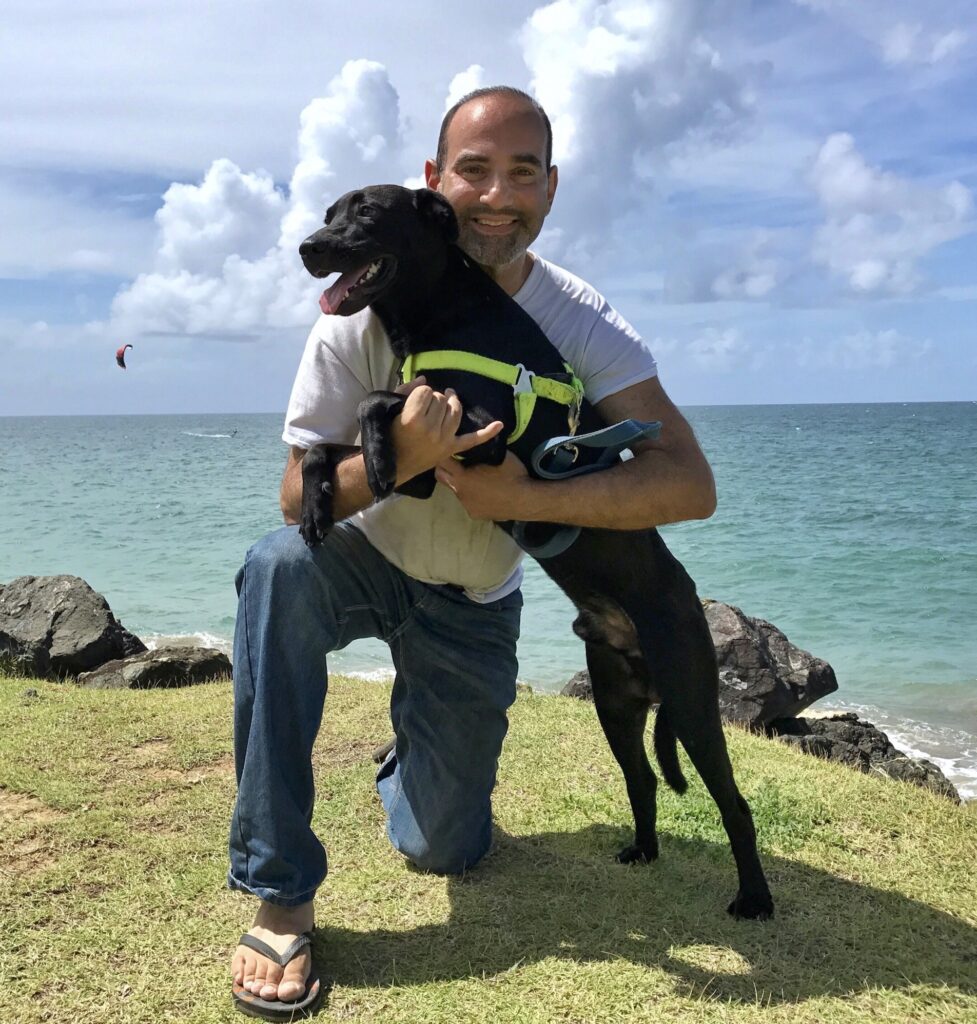
In September of 2017 Hurricane Maria pummeled Puerto Rico. As many of you might remember, I launched the “Lucky In Love Relief Fund for Stray Animals in Puerto Rico.” We raised $7,000 and bridged a fair amount of stray animals back to life. When Patrick was killed in August of 2018, Lucky would press his head into my chest several times a day. He knew that’s where the pain was. He did the same when Sammy died on January 30th, 2020.
The world was not big enough for Lucky and myself to not find each other.
I am so in love with Lucky that I coined the phrase and created a t-shirt that says “I Love My Dog Like A Crazy Potato” on the front. And on the back it says, “Love Doesn’t Have To Make Sense.”
We have been through some tough times together. Hurricane Maria, the loss of Patrick, the loss of Sammy, Covid, losing our home in 2021 and so on and so on. Lucky is a professional escape artist as you all remember from back in Puerto Rico. Well, he continued the same here in South Florida. He has serious separation anxiety with me when I leave the house. He has been this way since I pulled him off the street back in Puerto Rico on May 10th, 2017. When I left him in Puerto Rico for 6 months in 2019 while I was getting set up in Florida, it hurt him very badly. I was absolutely destroyed leaving him, Rocky and Polar Bear behind during that time also. I did find a family to take them in at that time for $800 a month.

A lot of people would have said goodbye to them right then and there. But, the second I landed in South Florida on March 28th, 2019, I had one thing and one thing only on my mind: To bring my boys over to Florida. Six months later, I pulled off mission impossible and had us all back together under one roof in Florida. As such, Lucky’s seperation anxiety was very continued his escape artistry here in South Florida. He’s calmed down a lot at this point. But, one day in December of 2023, he got out and got himself in a very serious predicament. I was actually in discussions about giving him up. As I have gotten older, It was becoming more difficult keeping up with him. Fortunately, I backed out of those discussions because I could never live without him. Lucky is my forever heart. We will finish our lives together as a family. And that includes BabyLady too.
In May of 2017, I told the world “This is No ordinary Love.” And that still holds true today. Lucky is my soulmate. I did not say soulMutt. No. I said “Lucky is my soulmate.” I will always be lucky in love with Lucky.
Sincerely,
Scott Smith
SESinspiration@gmail.com

